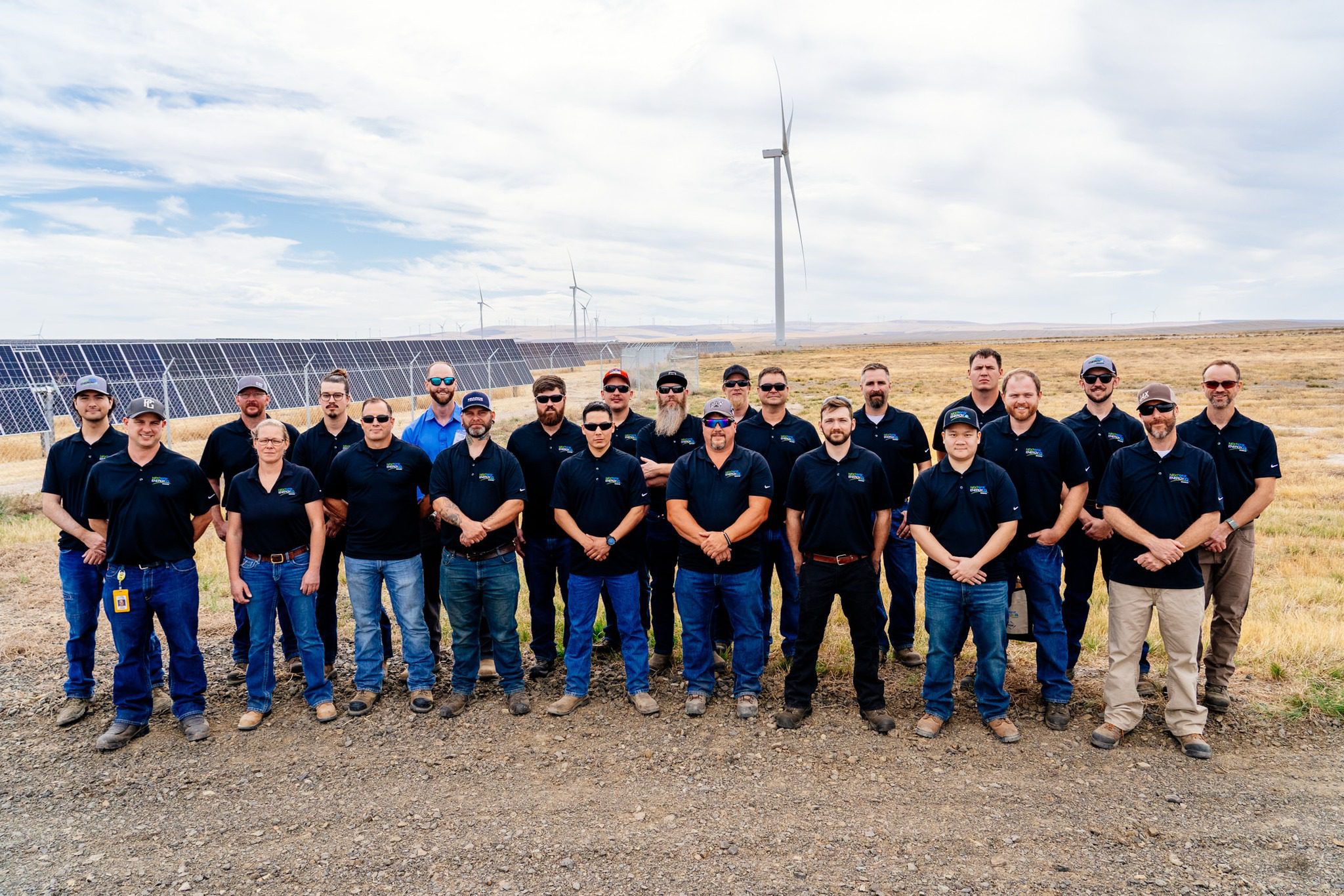On Sept. 28, NextEra Energy Resources, LLC (NextEra) and Portland General Electric (PGE) announced the completion of a major milestone for the clean energy industry. The commission of the Wheatridge Renewable Energy Facility in Morrow County, OR, marks the first wind-solar-battery plant of its size in the U.S.
Between a 300-megawatt wind farm, a 50-megawatt solar facility, and a 30-megawatt battery storage system, the so-called “hybrid power plant” can power 100,000 houses with carbon-free energy.
The plant is the result of collaboration. The wind farm, consisting of 120 turbines about 90 meters tall, was developed by Swaggart Wind Power, LLC, and began commercial operations in 2020. After NextEra purchased the development rights, it took the project a step further by including other forms of renewable energy.
One-third of the wind power — 100 megawatts — belongs to PGE, while NextEra owns the 200 megawatts and the solar and battery capacity. NextEra will then sell this energy to PGE through power purchase agreements. Umatilla Electric Cooperative built a new transmission line to bring power from the facility to PGE’s customers.
The local economy saw significant benefits from Wheatridge’s arrival. The construction of the wind farm generated about 300 jobs, plus about 175 jobs later on for the solar facility. There are also 10 full-time jobs for permanent operations.
“This facility provides jobs and tax revenue for our schools and county services while also supporting economic opportunities for the agricultural community,” said Don Russell, commissioner of Morrow County. “Wheatridge Renewable Energy Facilities also strengthens Morrow County’s position in the region’s clean energy economy.”
A report from the Lawrence Berkeley National Lab on hybrid power plants in the U.S. found that there are 140 with combined solar and storage, 14 with wind and storage, and nine with wind and solar. Only three previous U.S. projects have wind, solar, and batteries on one site; this is the largest instance.
“Most of these hybrid plants are solar and storage only. What makes (Wheatridge) special is that it includes a wind element as well,” explains scientist Mark Bolinger.
“Adding wind to solar and then having the battery there as well can result in an overall plant output that looks much steadier than any one of those resources on their own would look,” he elaborates.
According to Bolinger, there are considerable benefits to be obtained from such a facility. First, including all these forms of renewable energy on one piece of land cuts down development costs. The savings include a single lease and grid connection, operational costs, and employees able to work across energy forms.
The diverse forms also ensure that customers are never without access to power. The wind turbines keep things running when the sun goes down. Having batteries onsite allows for the storage of excess energy to be used in later times of need, such as when there is high demand or on a dark, windless night.
The project is an especially big deal for PGE, bringing the 130-year-old local energy company’s wind generation portfolio up to one gigawatt across the Northwest, with its last coal plant having shut down in 2020.
Wheatridge will also help PGE comply with a 2021 state law under which utility companies must cut emissions from serving power by 80% by 2030, 90% by 2035, and 100% by 2040.
“By supporting innovative projects like Wheatridge, we continue to accelerate renewable energy solutions for our state, communities, and customers, while maintaining reliability and affordability,” said Maria Pope, CEO and president of PGE.
More facilities like Wheatridge are probably on the horizon, especially with the Inflation Reduction Act providing incentives for mixed and standalone battery storage projects instead of just those based on solar energy. “We now have the opportunity to pursue federal funding through the Bipartisan Infrastructure Law and the Inflation Reduction Act to create clean energy jobs throughout the state,” said Oregon Gov. Kate Brown.





